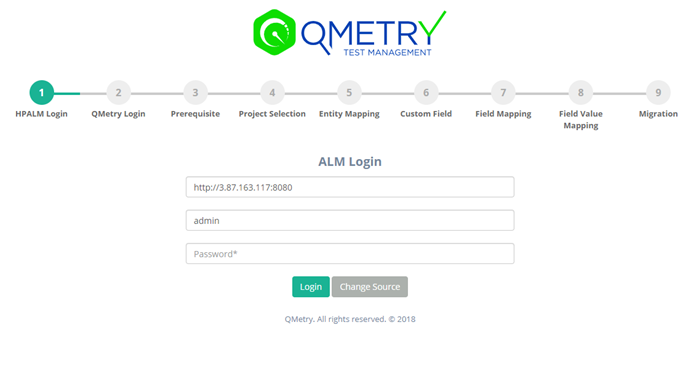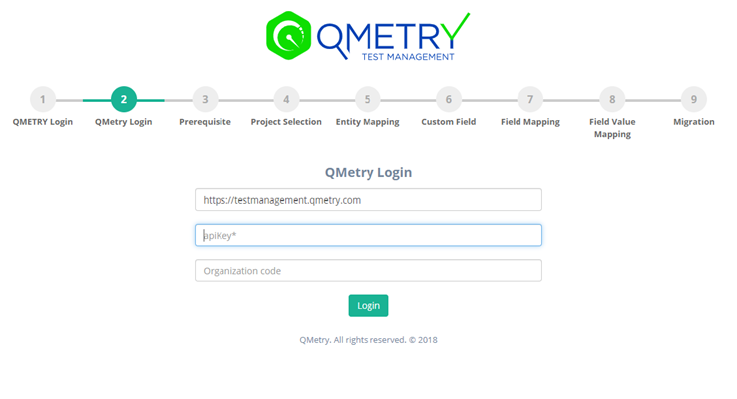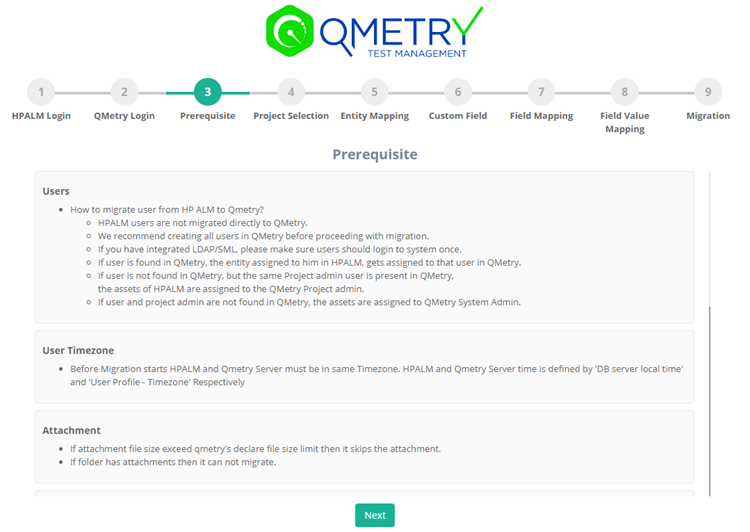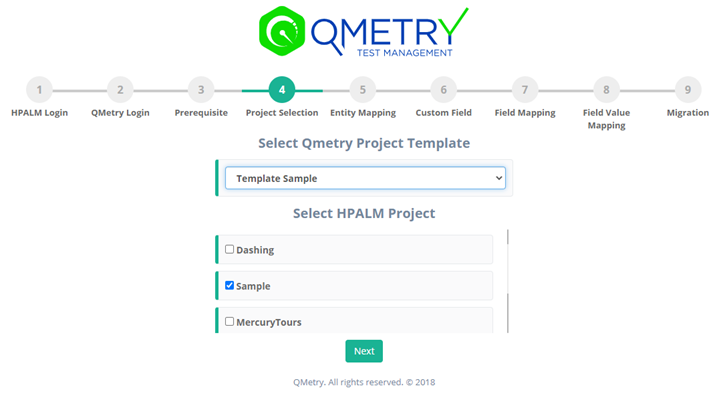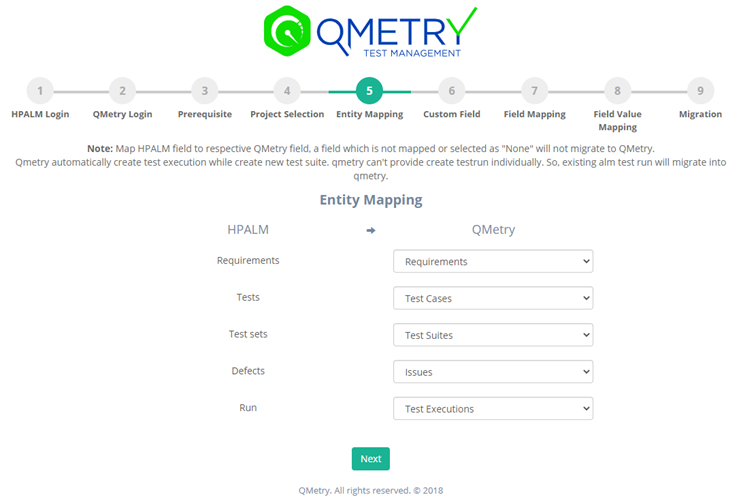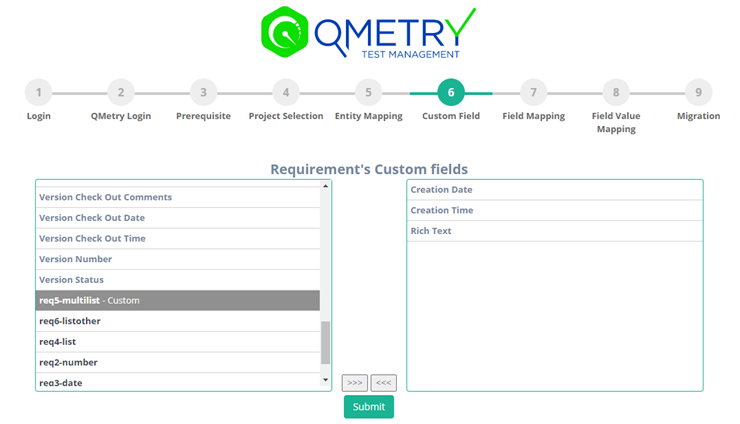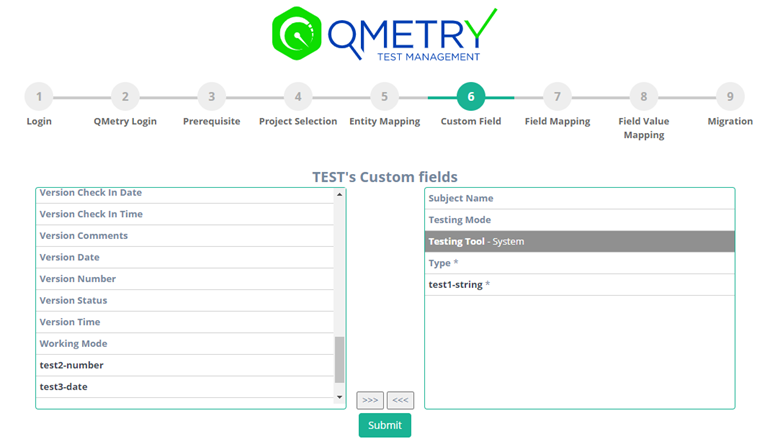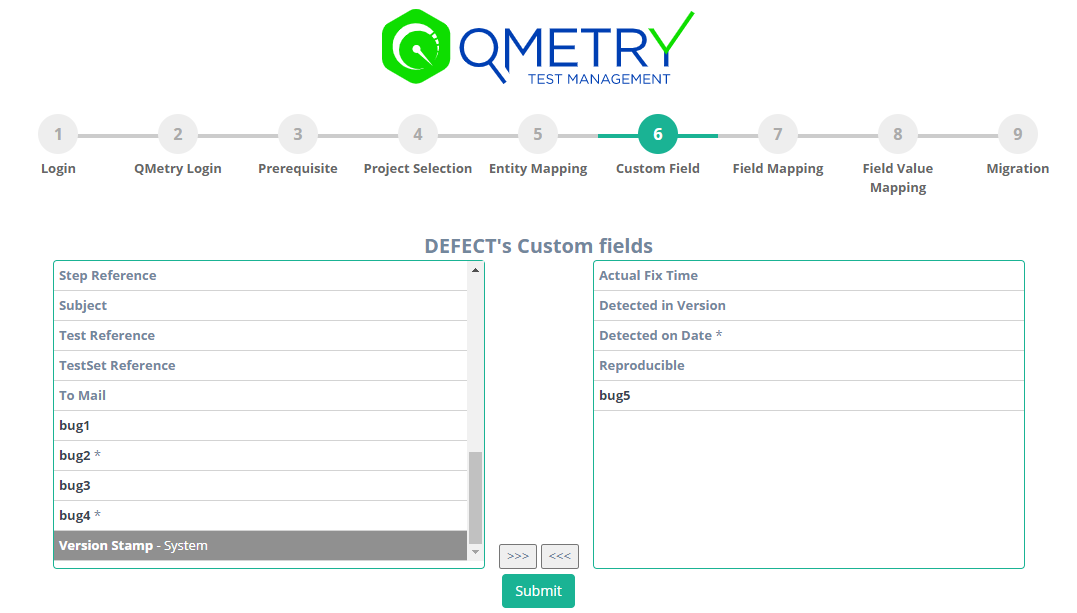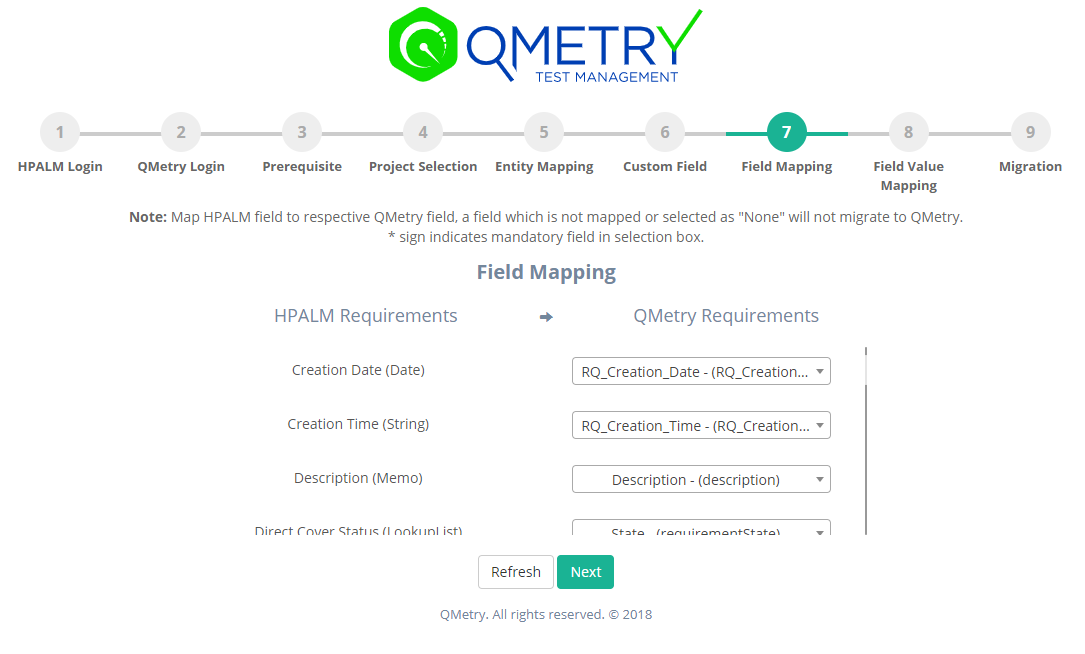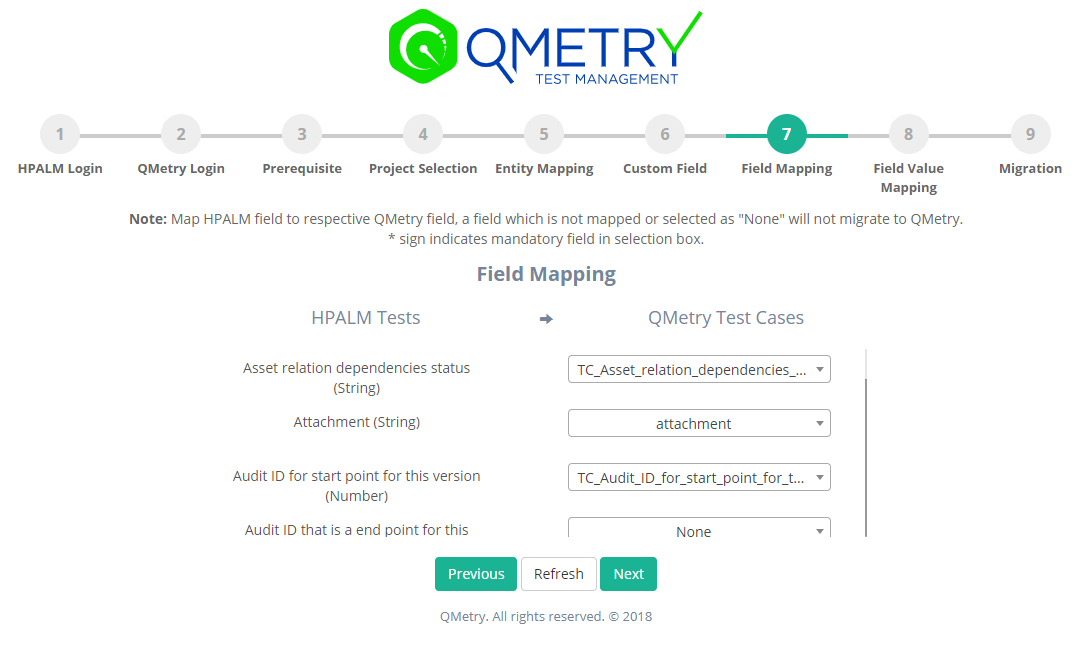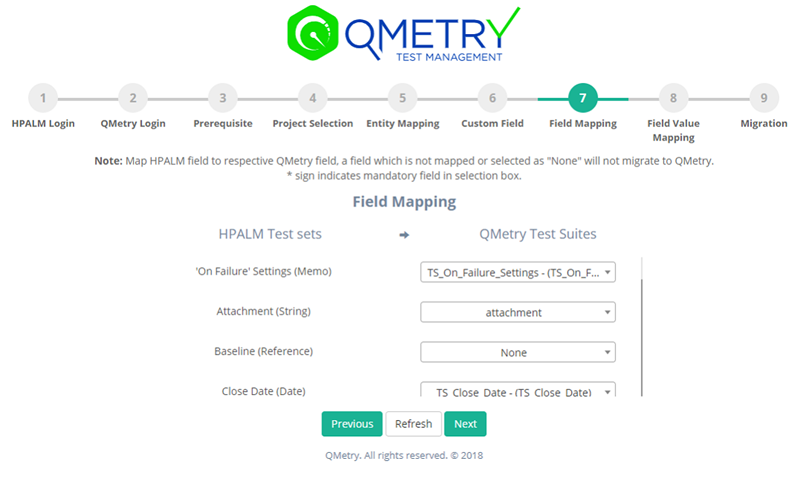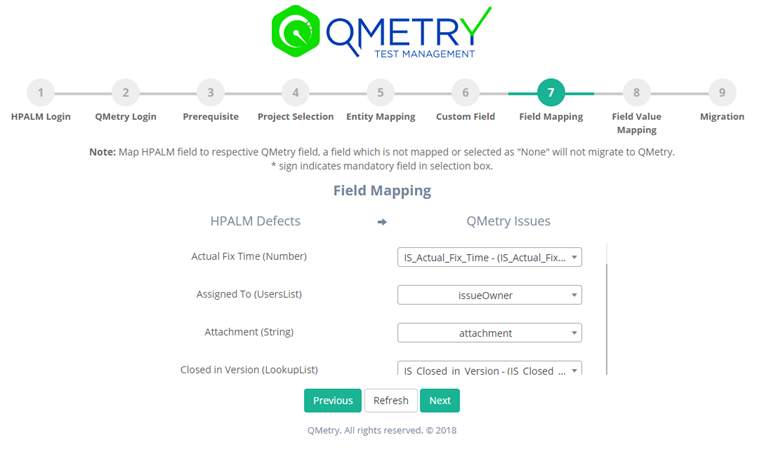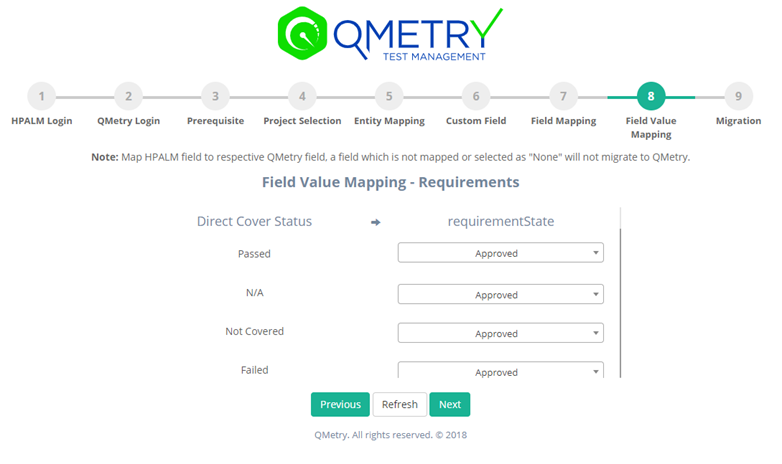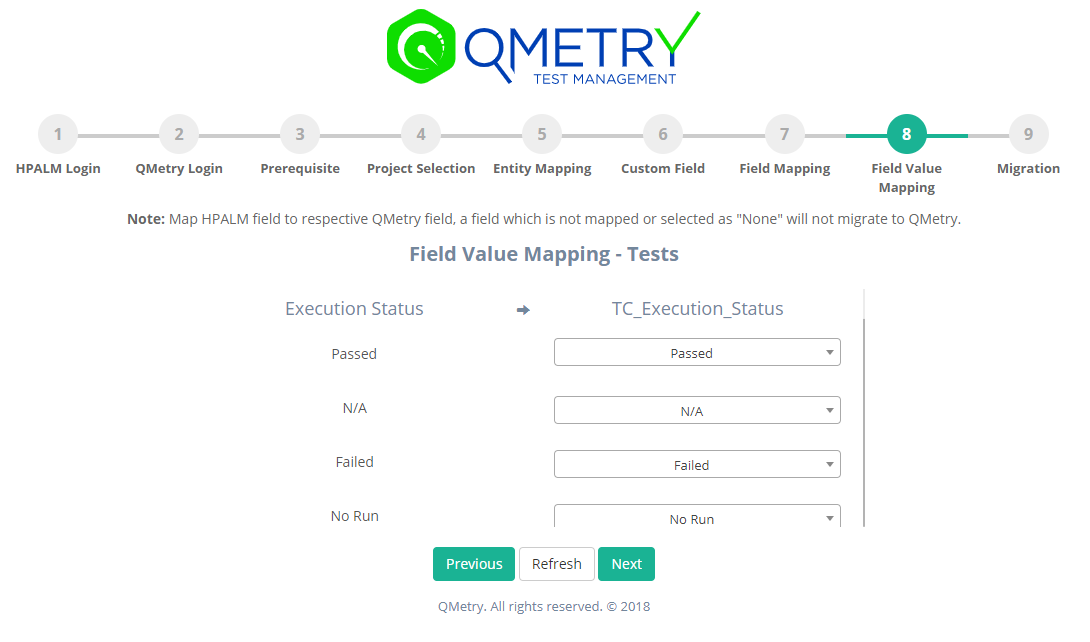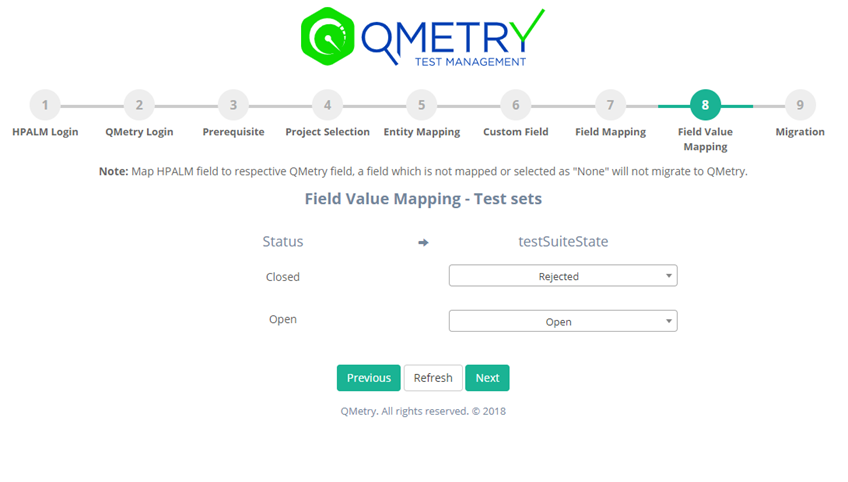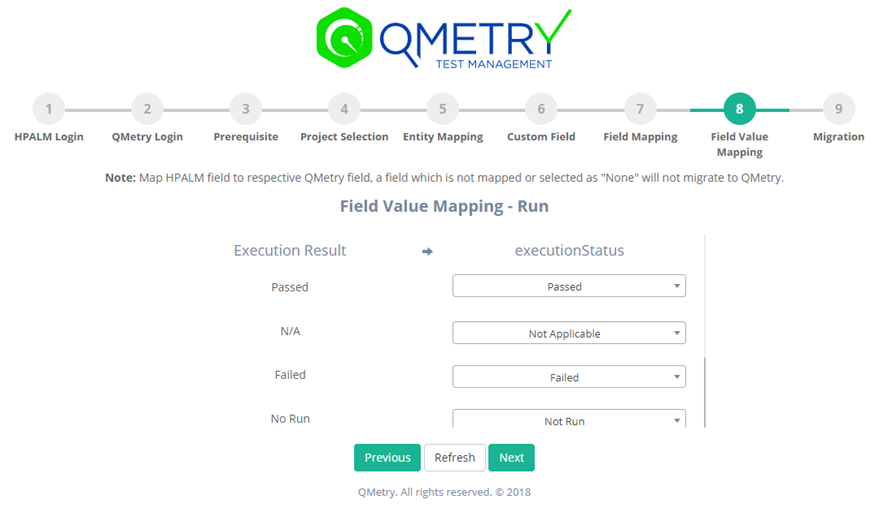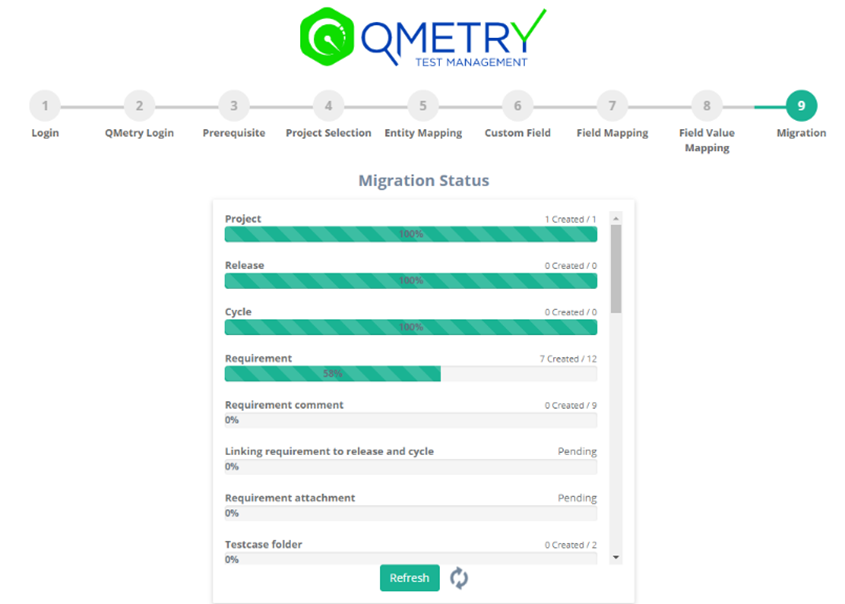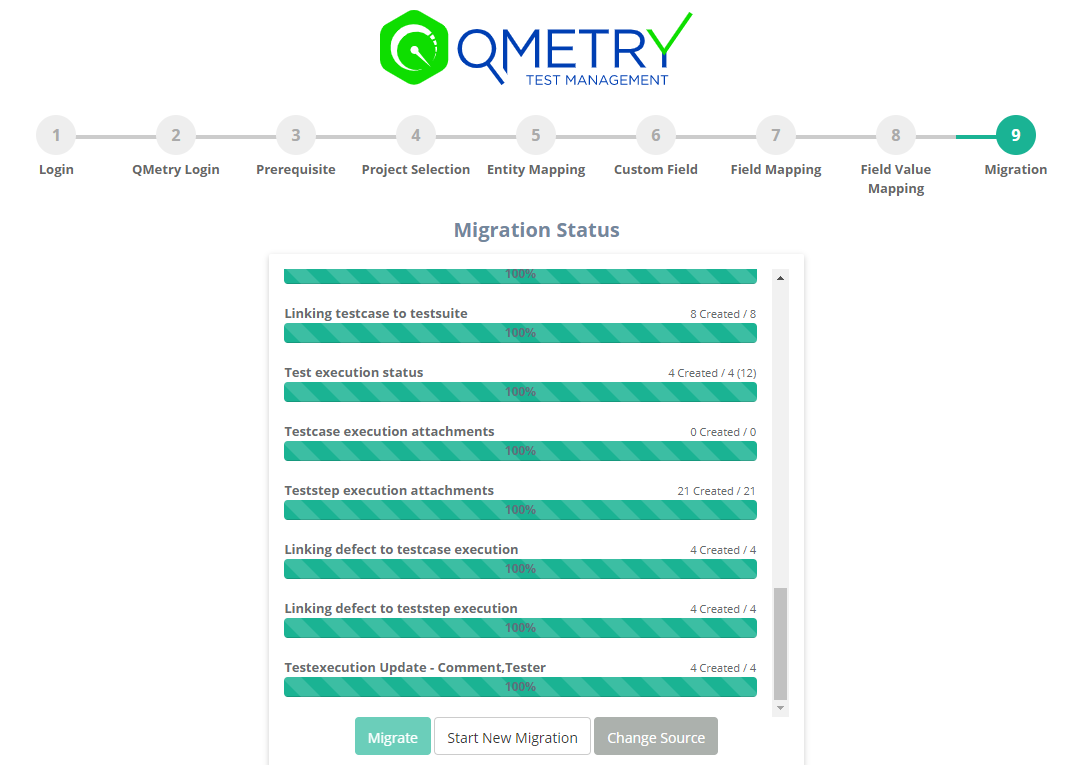Back to QMetry All Products Help Page
Migrating from HP ALM to QMetry using QMetry Migration Tool
In this guide, we will run you through the steps to migrate your data from HP-ALM to QMetry Test Management. This documentation enlists all the information on migration process like what can be migrated, and what are the assets/data that may not be migrated, features of the migration utility along with System Requirements and Pre-requisites to be taken care before proceeding with migration.
What ALM assets are migrated?
| ALM Assets | QMetry Assets |
|---|---|
| Requirements | Requirements |
| Tests | Test Cases |
| Test Sets | Test Suites |
| Test Runs | Test Execution |
| Defects | Issues |
Capabilities of the Migration Tool
- Migrates Requirements, Tests and all their versions, rich text in Test Steps.
- Migrates Test Data in Test Steps, Test Sets, Test Runs/Executions, Defects.
- Migrates custom fields & their values for all the assets.
- Migrates folder structure.
- Migrates comments for all the assets.
- Migrates linkages between assets.
- Migrates creation date for all the assets.
- Migrates all the attachments & URL links.
- Resumes migration failed / stopped due to an error.
- Support for Enumerated Mapping of ALM fields and their values with QMetry fields.
- Migrates custom field and system fields and auto map in field mapping.
System Requirements
- JDK 1.8.0_151 or above needs to be installed.
- MySQL 5.6 or above needs to be installed.
- ALM version 12.55 (Utility is tested on)
- Apache Tomcat server needs to be installed. Reference: https://archive.apache.org/dist/tomcat/tomcat-8/v8.5.60/bin/ (select as per the system you are using).
Before you begin (Prerequisites)
- Get your QMetry Migration Tool license from your account manager/QMetry Support
- Copy the "qmetry-license-version-1.0" license key under tomcat's ../apache/bin/ directory.
- Create HP ALM users in QMetry.
- Turn off API limits and Audit Logging.
- These steps need to be followed in the QMetry database. Enter 'root' database credentials when prompted.
- sudo su -
- docker exec -it qmetry_rds_1 bash
- mysql -uroot -p -A
- USE qmetry;
- Run the following SELECT query check the status and the UPDATE query to disable audit logs and email notifications.
- 0=disabled 1=Enabled
- SELECT CAST(isEmailEnabled AS UNSIGNED) as isEmailEnabled , CAST(isLogEnabled AS UNSIGNED) as isLogEnabled from client;
- UPDATE `client` SET `isEmailEnabled` = b'0', `isLogEnabled` = b'0';
- To enable them back (after migration is complete) run the following UPDATE query, and to check its updated value run the SELECT query.
- UPDATE `client` SET `isEmailEnabled` = b'1', `isLogEnabled` = b'1';
- SELECT CAST(isEmailEnabled AS UNSIGNED) as isEmailEnabled , CAST(isLogEnabled AS UNSIGNED) as isLogEnabled from client;
- Type \q to exit MySQL DB.
- Type exit to exit the docker container.
- These steps need to be followed in the QMetry database. Enter 'root' database credentials when prompted.
- Install Certificate in JDK on the machine running the migration utility.
- Follow the steps specified here : How to install certificate in JDK ?
ALM Utility Details
- Get the ALM Migration utility qmalm.war file from QMetry Support.
Migration Steps (with tomcat server)
- Before proceeding with the migration, get HP ALM → QMetry migration utlity up and running.
- Copy the "qmetry-license-version-1.0" license key under tomcat's ../apache/bin/ directory.
- Go to your tomcat installation directory. To deploy the utility, copy the 'qmalm.war' file to the ../apache/webapps/ directory, it will auto-extract to 'qmalm' folder.
- Your MySQL services should be started and login credentials should be : username - root, password - qmetry.
- Start tomcat to run the application by executing the ./startup.sh in linux OR startup.bat in windows located under ../apache/bin/ directory.
Migration Steps (without tomcat server)
- Open the command prompt and go to the qmalm.war directory.
- Put license file beside qmalm.war file.
- Unless the default utility DB credentials are changed, run the following command by giving the path of the qmalm.war file : PATH_TO_WAR_FILE>java -jar qmalm.war --spring.datasource.username=root --spring.datasource.password=qmetry
- If the DB credentials have been changed, replace them in the following command
- PATH_TO_WAR_FILE>java -jar qmalm.war --spring.datasource.username=<dbusername> --spring.datasource.password=<dbpwd>
The application should be accessible from the same machine using the URL : http://localhost:8080/qmalm . Once you're on the ALM login page of the Utility, proceed with steps below:
Step 1: ALM Login
We recommend logging in using Admin Credentials so that the Projects available for migration are not restricted by a user's permissions.
- Base URL: HP ALM URL in the format: http://<IP Address>:<Port>
- Username: HP ALM Username and Password
Step 2: QMetry Login
We recommend logging in using Admin Credentials so that the Projects available for migration are not restricted by a user's permissions.
- Base URL: Your QMetry login : example: https://testmanagement.qmetry.com
- Username and Password: QMetry Username and Password
- Organization Code: Enter QMetry Organization Code, or leave it empty.
Step 3: Prerequisites
Go through the Pre-requisites section to know more about how users, user-defined fields, etc. need to be created and managed during the migration process.
Step 4: Project Selection
- Select ALM Projects you would like to migrate into QMetry. Also select the QMetry Project Template to be used. The selected HP ALM projects are migrated one at a time.
Step 5: Entity Mapping
Under this section, map your HP ALM assets being migrated into relevant QMetry Assets.
Step 6: Custom Fields
You can select system fields and user-defined fields to migrate that are part of your ALM project that need to be migrated to QMetry.
NOTE : This is an important step to ensure there is no data loss when the project is migrated to QMetry. Make sure all the required fields are mapped correctly. Once migrated, the data cannot be reverted back.
Selected fields will be converted as custom fields in QMetry and will be auto mapped with the appropriate fields in the field mapping page.
Custom Field for ALM Requirements
Custom Field for ALM Test
Custom Field for ALM Test Set
Custom Field for ALM Defect
Step 7: Field Mapping
Field mapping helps you to migrate the data from the fields of your ALM assets to respective QMetry fields. Complete the field mapping for as many fields as possible to get their data migrated to QMetry. Fields can be mapped for Requirements, Tests, Test Sets, Test Runs, and Defects.
Field Mapping for ALM Requirements → QMetry Requirements
Field Mapping for ALM Tests → QMetry Test Cases
Field Mapping for ALM Test sets -> QMetry Test Suites
Field Mapping for ALM Defects → QMetry Issues
Step 8: Field Value Mapping
You can map the values of your different fields of HP ALM, whose values may not match with QMetry field values.
For example,
- In HP ALM, you have Priority Field having values : Low, Medium, High, Very High, Urgent, while;
- In QMetry Priority Field may only have values : High, Medium, Low.
You can map such field values to have appropriate values while they are migrated in QMetry.
Field Value Mapping for Requirements
Field Value Mapping for Tests (QMetry Test Cases)
Field Value Mapping of Test Sets (QMetry Test Suites)
Field Value Mapping for Executions
Migration Summary. Click "Migrate" to start Migration.
The migration progress can be monitored until it is completed.
Once the migration is completed, you can log in to QMetry and verify all the migrated data in your given projects.
Limitations
- Older versions of Test Step links, Attachments, as this data is not available from ALM and Attachments greater than 10 MB in size are not migrated.
- QMetry does not support issue link with test-suite, so will not migrate issue linked to test-suits.
- Business Models, Test Configurations, Libraries, Dashboards, Live Reports of Test Sets, Graphs, History logs, Business Components are not migrated.
- Long text in Project Description, Comments are not supported by QTM. for example description in release and cycle.
- ALM users are not migrated to QMetry.
- We recommend creating all HP ALM users in QMetry before proceeding with the migration.
- If the user is found in QMetry, the entity assigned to him in HP ALM, gets assigned to that user in QMetry.
- If the user is not found in QMetry, but the same Project admin user is present in QMetry, the assets of HP ALM are assigned to the QMetry Project admin.
- If user and project admin are not found in QMetry, the assets are assigned to QMetry System Admin.
- Inheritance feature of Requirements is not supported.
- QMetry Testcase: Estimated time maximum value is 1500; the value will be skipped for Estimated time > 1500.
- Custom Field
- Custom field name maximum length is 50.
- Custom field Type String maximum length is 255.
- Custom list's value maximum length is 100.
- Custom field type Reference and User list will not be migrated.
Need Assistance?
If you run into any questions or concerns during your migration, you can reach out to QMetry Support by sending an email at : qtmprofessional@qmetrysupport.atlassian.net, or you can also raise a ticket directly on our Support Portal. We would be happy to assist you!
Back to QMetry All Products Help Page

